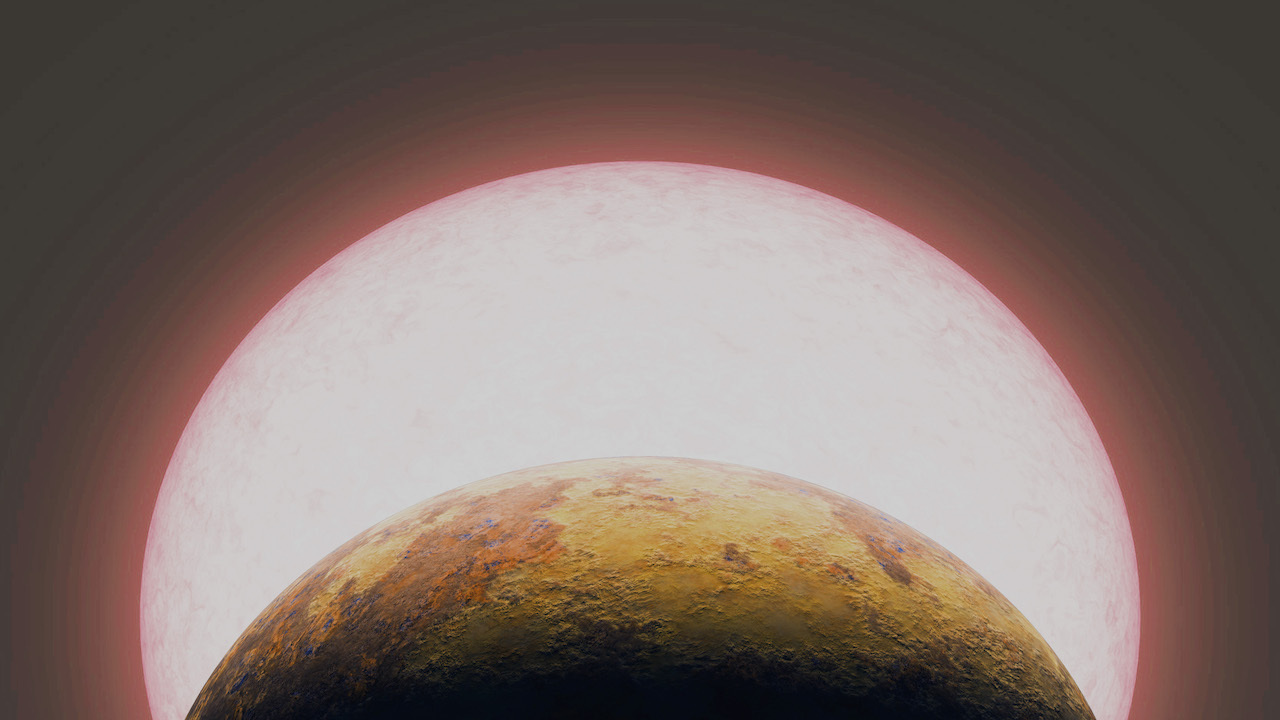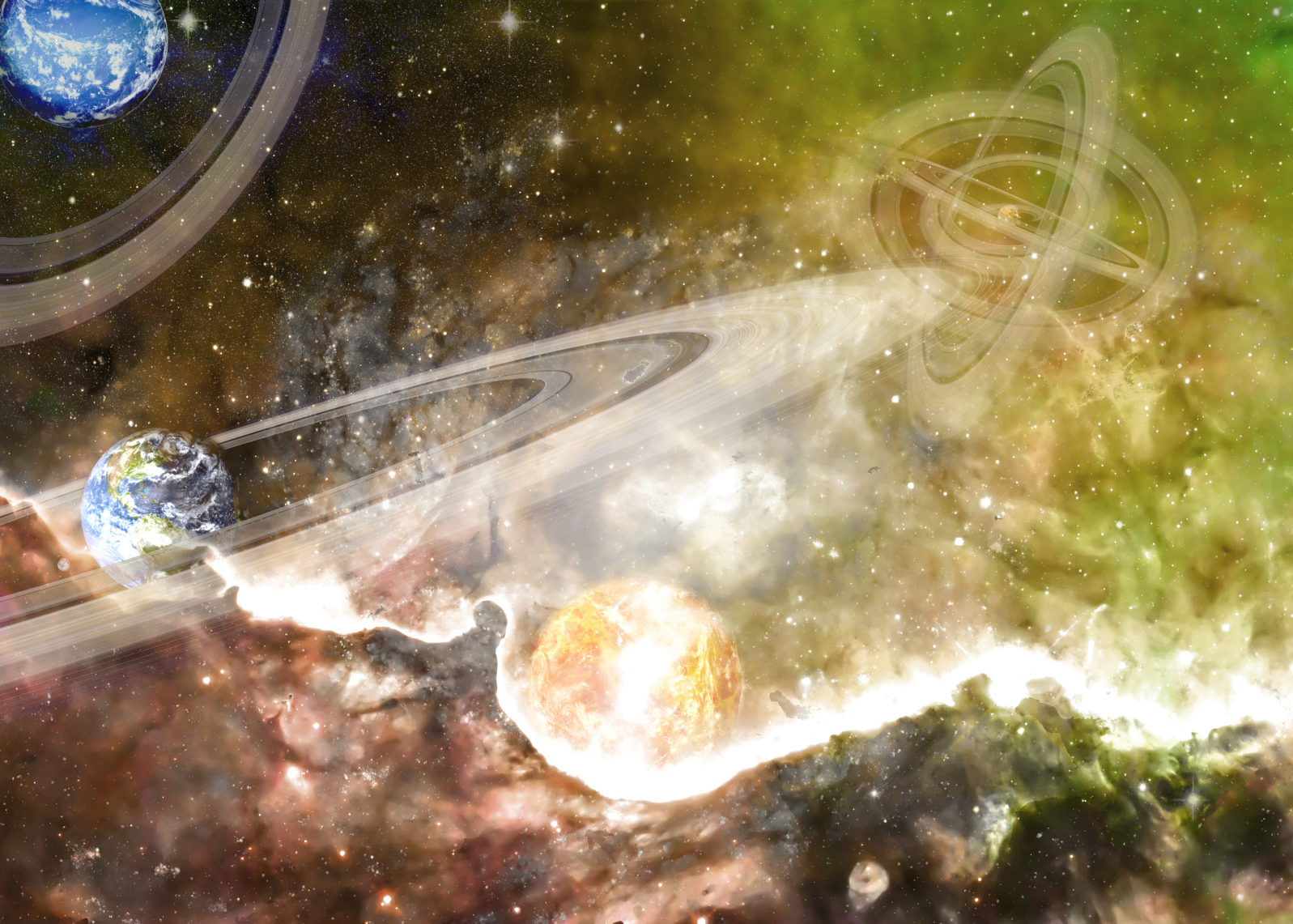The Search for Extraterrestrial Life 14
According to a new study from the University of Copenhagen, 4.5 billion years ago, there was enough water on Mars to cover the planet in an ocean 300 metres deepOur universe:
A recent buzz is the magnificent new map of the universe from Johns Hopkins University, giving some sense of our universe’s nearly unfathomable size.
Astronomer Hugh Ross points out at Reasons to Believe that the universe also seems to be designed for observability: Sound implausible? Well, here’s what he says: “ … there’s a relatively narrow time window in the history of the universe during which astronomers can observe 100% of the universe’s past history. Humans are inside that time window now. I also demonstrated that we are living in the one location within this vast universe where intelligent physical life is possible, and where that intelligent life can observe 100% of the past history of the universe. I argued that perhaps our epoch in cosmic history or our location might be coincidental, but not both simultaneously.” He talks about that in his book Why the universe is the way it is (Baker, 2008).

That said, there are still a lot of puzzles out there: For example, half the universe is missing and no one seems to know why: “When the Universe began, the cosmos was full of energy. Since energy can convert into matter and antimatter, as the Universe cooled, the energy should have made equal portions of matter and antimatter. Yet, when we look around us, we are left with a puzzling observation: The Universe we see is made solely of matter. There is no explanation for this fundamental “asymmetry.” Understanding why the Universe was created with more matter than antimatter is key to understanding why anything exists.” (Don Lincoln, Big Think, November 30, 2022)
Theoretical astrophysicist Ethan Siegel notes that we ought to be thankful that the universe is sometimes out of equilibrium: “”The Universe began from a very hot, energetic, dense, and random state. And yet, somehow, all of this complexity emerged. One underappreciated key to that process is the transitions that have taken place between unstable, high-energy states to lower-energy, more stable ones. This helped create the Universe as we know it, as complex organisms and living worlds couldn’t exist without these phase transitions. (Big Think, November 24, 2022)
Meanwhile, at Scientific American we learn that astronomers are grappling with the James Webb Space Telescope’s discovery of early galaxies: “Simply put, candidate galaxies in the early universe are popping up in numbers that defy predictions, with dozens found so far. Explaining this excess may require substantial revisions to prevailing cosmological models, changes that could involve the first galaxies forming sooner, their stars shining brighter—or perhaps the nature of dark matter or dark energy being even more complex and mysterious than previously thought.” (Jonathan O’Callaghan, December 6, 2022)
The JWST has also found the oldest galaxies so far: “Astronomers confirmed that four ancient galaxies detected by the James Webb Space Telescope in the early months of its operations are the oldest scientists have ever seen and nearly as old as the universe itself.” (MSN, December 9, 2022):
In our galaxy
A 3-D map of the Milky Way:
“The Milky Way is a spiral galaxy comprised of a bar-shaped core region surrounded by a flat disk of gas, dust and stars about 120,000 light-years wide. Our solar system is located about 27,000 light-years from the galactic center within one of the disk’s four spiral arms. One light-year is the distance light travels in a year: about 6 trillion miles (10 trillion kilometres).” – Charles Q. Choi, Spacecom, August 1, 2019).
On a (much) smaller scale, exoplanet TOI-1075 b is “one of the most massive ever discovered. … Data from this four-year-old mission revealed that TOI-1075 b has a superheated surface of about 1,922 degrees Fahrenheit (1,050 Celsius).” – Doris Elin Urrutia, Space.com, (November 24, 2022) Here’s an artist’s impression of it:

Our solar system
Apparently, a ghostly glow surrounds our solar system and no one can explain it: “All the stars and galaxies surrounding the Solar System – and zodiacal light, aka dust on the Solar System’s plane – none of these can explain what astronomers are now calling ‘ghost light’.” – Michelle Starr, ScienceAlert, December 9, 2022. Starr suggests it could be tiny particles of dust and ice, reflecting sunlight.
It’s Saturn’s moon Titan’s time to grab the spotlight: Clouds were found on its surface: “The initial images were puzzling, but when researchers looked at them more closely, the results were spectacular: the telescope imaged atmospheric clouds on Titan.” (Meghan Bartels, Space.com, December 1, 2022)
Chances for life on Titan? There’s a hitch:
Titan is at the same time remarkably similar to and different from Earth: it’s got liquids on its surface, vast bodies of liquid that run in rivers and form lakes and seas, and it’s even got rain that falls from the sky. It’s got exciting geological features like mountains, hills, or fluvial valleys. But unlike Earth, the landscape isn’t carved by water — the liquids are hydrocarbons like methane or ethane, and the moon has a hydrocarbon cycle instead of a water cycle. The atmosphere is also composed mostly of nitrogen (95%) and some hydrocarbons (5%), and it’s thick and hazy, shrouding the moon and making it hard for telescopes to peer through.
Mihai Andrei, “James Webb Telescope spots a rare sight on an extraterrestrial body: clouds ZME Science” at ZME Science (December 5, 2022)
The life there would need to be formed from those elements… now that would be different (likely impossible).
Mars:
According to a new study from the University of Copenhagen, “some 4.5 billion years ago, there was enough water for the entire planet to be covered in a 300-metre-deep ocean:
“At this time, Mars was bombarded with asteroids filled with ice. It happened in the first 100 million years of the planet’s evolution. Another interesting angle is that the asteroids also carried organic molecules that are biologically important for life,” says Professor Martin Bizzarro from the Centre for Star and Planet Formation.
“In addition to water, the icy asteroids also brought biologically relevant molecules such as amino acids to the Red Planet. Amino acids are used when DNA and RNA form bases that contain everything a cell needs.” (November 17, 2022) The paper is open access.
What type of organism might have been happy living on Mars? According to NASA Astrobiology, “Probably something like bacteria. Even if life did gain a foothold on Mars, it’s unlikely that it ever evolved beyond the martian equivalent of terrestrial single-celled bacteria.”
Here at home:
Some researchers wonder why, over the history of life, crab-like creatures keep appearing: “While there doesn’t seem to be a ceiling on the number of species that might evolve, there may be restraints on how many fundamental forms those species can evolve into. The evolution of crab-like creatures may be one of the best examples of this, since they have evolved not just once but at least five times.” – Matthew Wills, “Crabs have evolved five separate times – why do the same forms keep appearing in nature?” (The Conversation, December 6, 2022)
It’s been suggested: If we find complex life on exoplanets, some of it might be “crabs”. Over millions of years, many crustaceans gradually grew to look more and more like crabs, a process called convergent evolution. In an environment similar to Earth’s, we might expect life forms to converge on similar solutions. “Crabbiness” might be one of them.
The universe, in any event, seems to be fine-tuned for life:
In the video above, Philip Goff (agnostic philosopher) and Luke Barnes (theist cosmologist) defend the Fine-Tuning Argument
You may also wish to read: Search for extraterrestrial life 13 A surprising candidate in the search for life in our solar system is Neptune’s moon Triton. Meanwhile, at Universe Today, Laurence Tognetti thoughtfully asks, what if we ARE alone?
